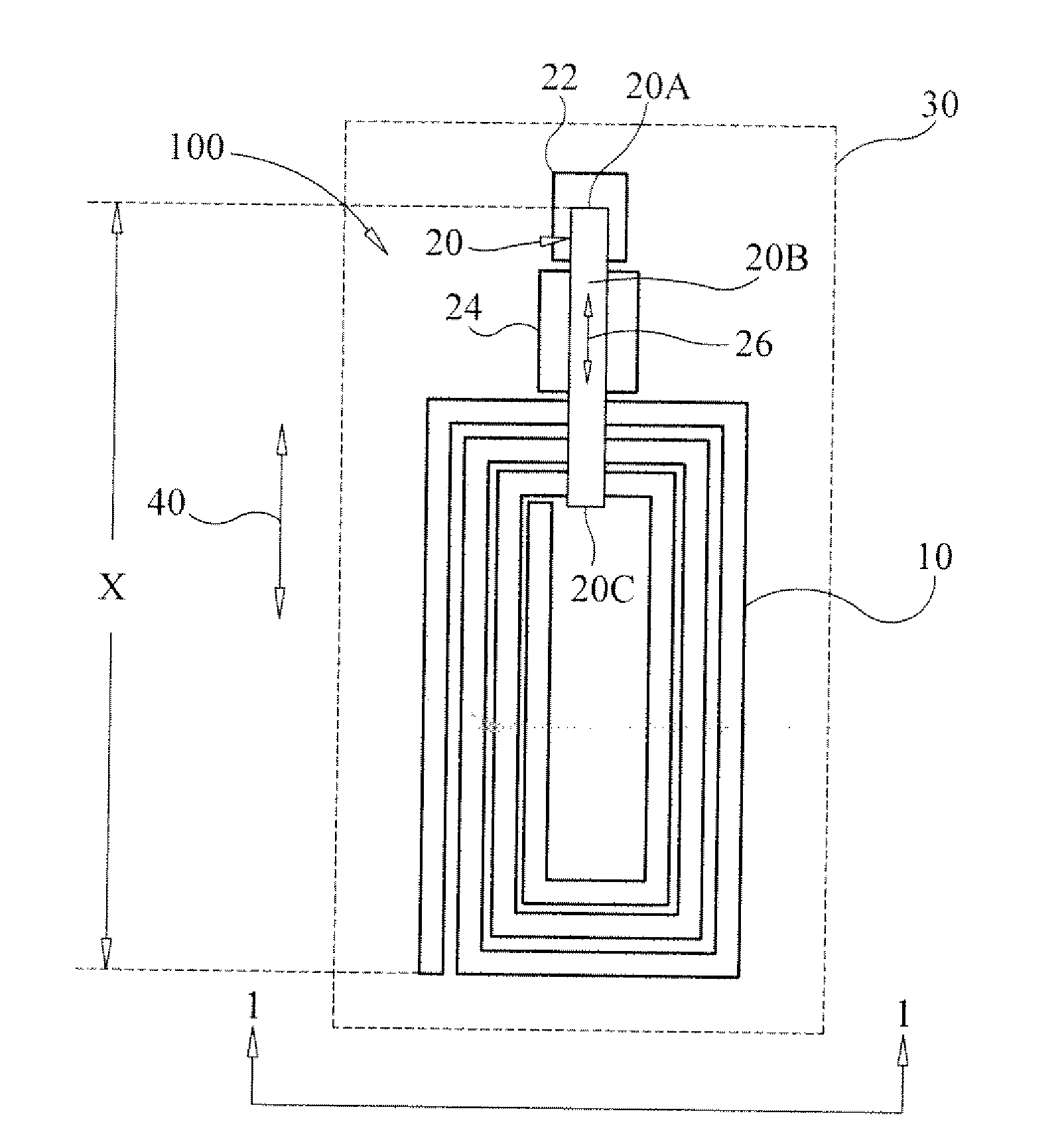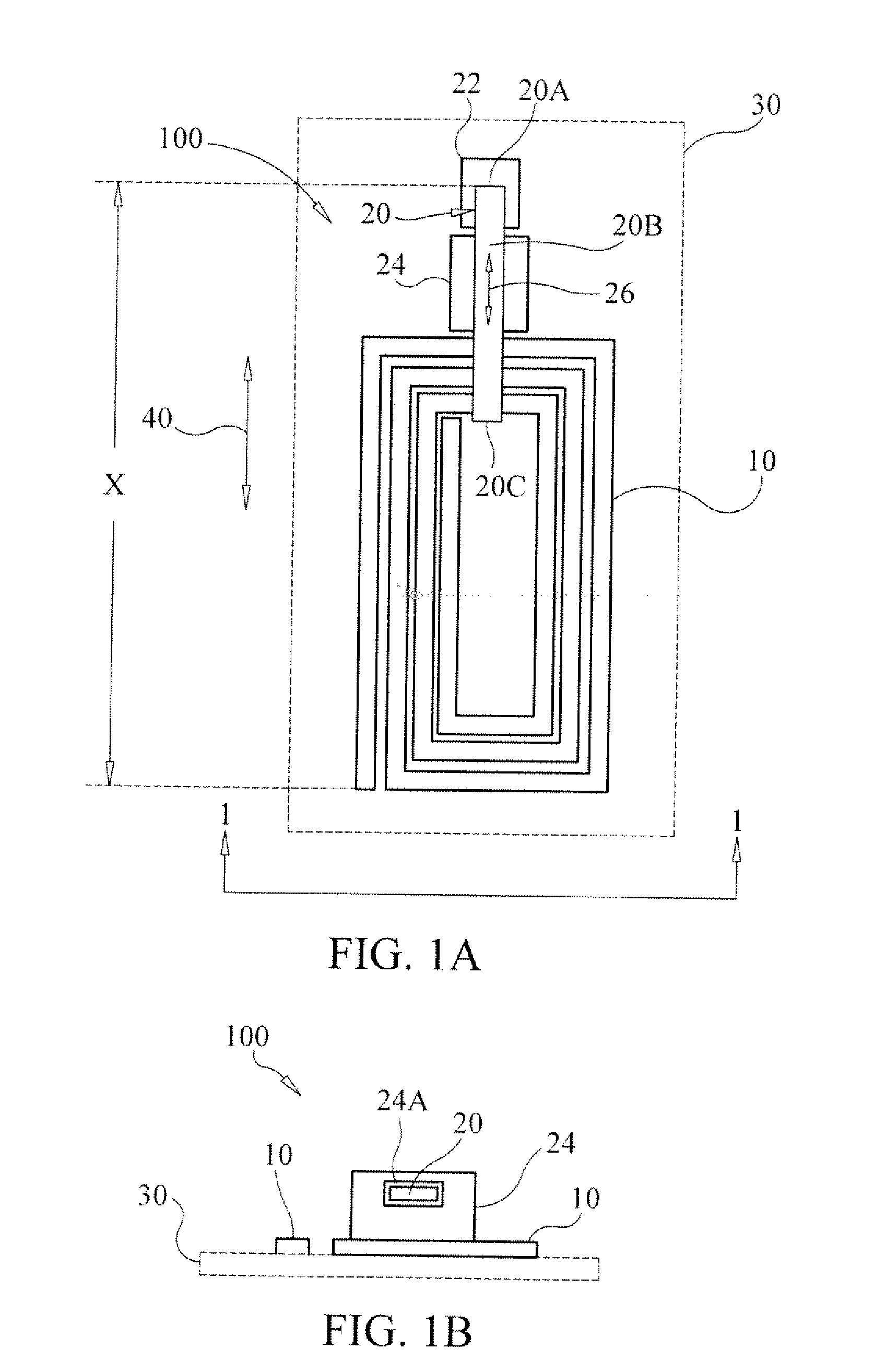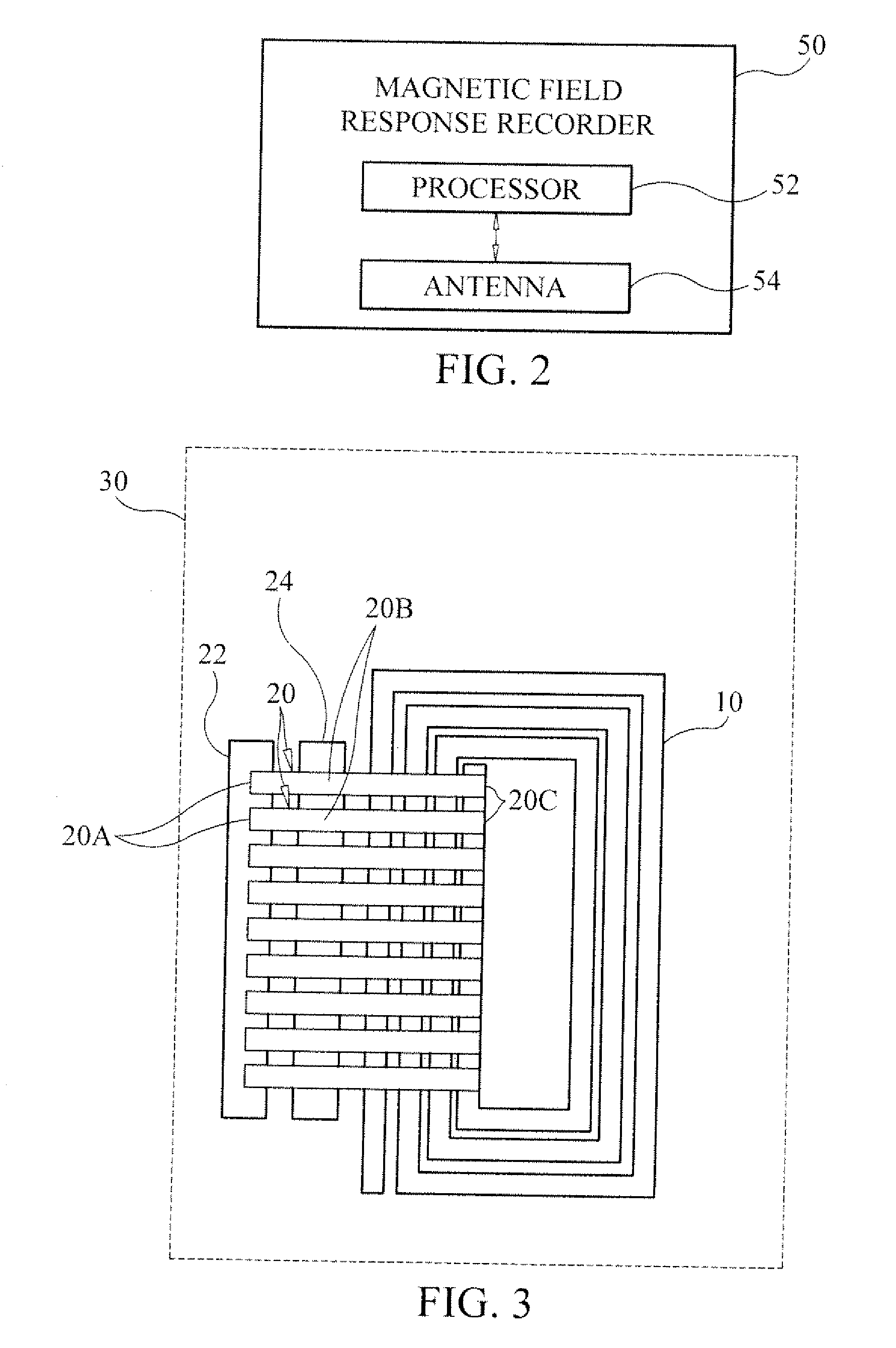Wireless Open-Circuit In-Plane Strain and Displacement Sensor Requiring No Electrical Connections
a strain and displacement sensor, wireless open-circuit technology, applied in the direction of resistance/reactance/impedence, instruments, force measurement, etc., can solve the problems of increasing the cost of electrical devices, requiring manpower, and expensive use of solder
- Summary
- Abstract
- Description
- Claims
- Application Information
AI Technical Summary
Benefits of technology
Problems solved by technology
Method used
Image
Examples
Embodiment Construction
[0016]Referring now to the drawings and more particularly to FIGS. 1A and 1B, a wireless in-plane strain and displacement sensor in accordance with an embodiment of the present invention is shown and is referenced generally by numeral 100. The illustrated sensor 100 is presented as an exemplary embodiment as there will be many possible embodiments that can be constructed based on the basic principles of the present invention without departing from the scope thereof. In the illustrated embodiment, sensor 100 includes a pattern 10 of electrically conductive material and an electrically unconnected electrode 20 spaced apart from pattern 10.
[0017]Electrical conductor pattern 10 is any electrical conductor (e.g., wire, run, thin-film trace, etc.) that can be shaped to form an open-circuit pattern that can store an electric field and a magnetic field. Pattern 10 is a single-component open-circuit element with no electrical connections being made thereto. The term “open-circuit pattern” as...
PUM
 Login to View More
Login to View More Abstract
Description
Claims
Application Information
 Login to View More
Login to View More - R&D
- Intellectual Property
- Life Sciences
- Materials
- Tech Scout
- Unparalleled Data Quality
- Higher Quality Content
- 60% Fewer Hallucinations
Browse by: Latest US Patents, China's latest patents, Technical Efficacy Thesaurus, Application Domain, Technology Topic, Popular Technical Reports.
© 2025 PatSnap. All rights reserved.Legal|Privacy policy|Modern Slavery Act Transparency Statement|Sitemap|About US| Contact US: help@patsnap.com



